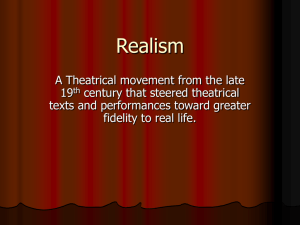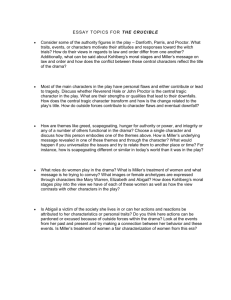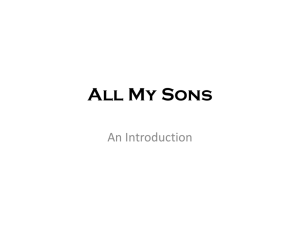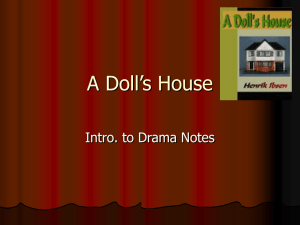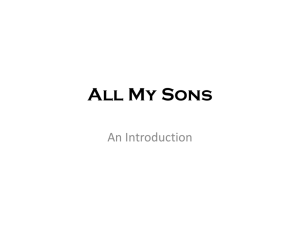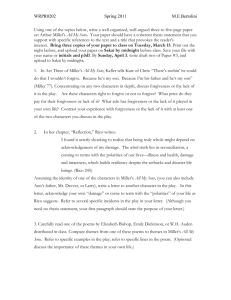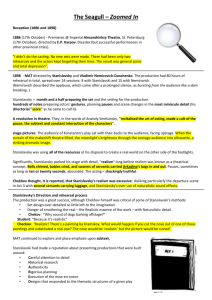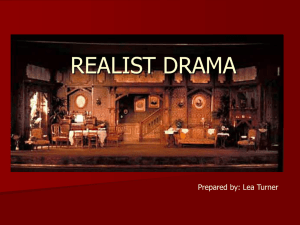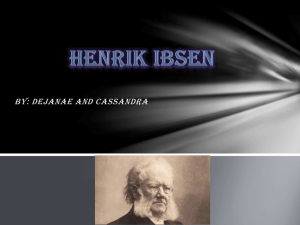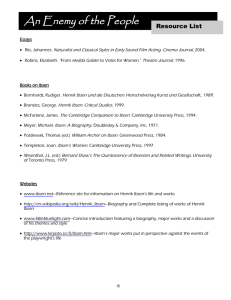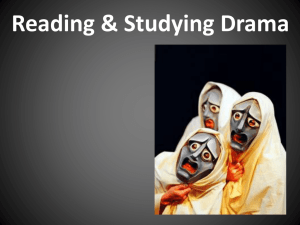Document
advertisement
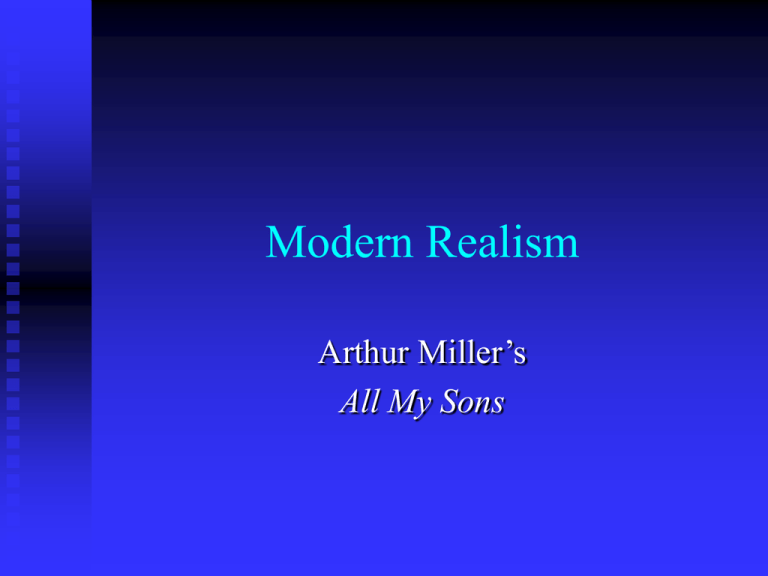
Modern Realism Arthur Miller’s All My Sons Origins of Modern Drama: Ibsen Henrik Ibsen, Norway, 1828-1906 GB Shaw said “The door slam at the end of [Ibsen’s] A Doll’s House ushered in the age of Modernism” Christmas, 1879; about gender roles and legal restrictions; ends in Nora walking out on her family. Social problems depicted “realistically” - no easy solutions or deus ex macchina Well-made play, intensive structure Middle classes, everyday diction Focus on individuals, but in their social environment Rights of individual over group, religion, morality Other theatrical factors Pictorial realism of setting Box set and real objects on stage, used by actors. Rise of designers, recently costumers, by early 20th c. lighting designers Rise of the director -- to provide unity of vision based in the text Ensemble acting and fourth wall Stanislavsky’s work to train actors, early 20th c. Ibsen’s plays are banned by censors across Europe André Antoine, Théâtre Libre, 1887 American Realism -- Miller From 1930’s; Group Theatre adopts Stanislavsky and Method; writer Clifford Odetts Arthur Miller, 1915-2005 NYC, Jewish, U Michigan Journalism to English, grad ‘38, chooses playwriting over Hollywood, works Federal Theatre Project NYC All My Sons, 1947, his first major work, wins Drama Critics’ Circle Award Death of A Salesman, 1949, wins Pulitzer, Tony, Drama Critics, Theatre Club… The Crucible, View from the Bridge, After the Fall, Incident at Vichy, Price Subpoenaed by HUAC, refused to name names All My Sons Based on true story from WWII, parts for tanks were shipped in spite of known defects, the man was convicted. Set Aug 1947, the cracked cylinder heads and Larry’s death were in 1944. Parallel plots: Chris and Ann’s hoped for marriage; Joe’s innocence or guilt, dishonesty Tight, intensive structure; 1 setting 1 day; Ann incites action; rising action as we figure out Joe’s guilt, Kate’s complicity, Chris’s idealism is smashed, Ann reveals the letter. Climax. Themes Responsibility: to family vs. society. Title. Honor: war vs. business or Chris vs. Joe Idealism: must all stars go out? Materialism masks real value Each character represents a different take on these themes. Characterization Each given three dimensions, depth Joe is similar to the tragic hero: essentially good (dedicated to family, runs business, cares for neighborhood, sees own limits), but “hamartia” (tragic flaw) is blindness to value of the larger “human family” -- that title again: “all my sons.” Background stories that justify ethical positions Kellers and Deevers’ stories interwoven Use of realistic detail: the grape juice, clothing, tree Supernatural: Frank and Kate, proven wrong. A form of “ability to lie to oneself.” “Tragedy and the Common Man” Miller’s article for NY Times, 1949 “I believe that the common man is as apt a subject for tragedy in its higher sense as kings were.” “Tragedy, then, is the consequence of a man’s total compulsion to evaluate himself justly.” “The [tragic] flaw… is really nothing… but his inherent unwillingness to remain passive in the face of what he conceives to be a challenge to his dignity.” “The revolutionary questioning of a stable environment [social, external forces] is what terrifies.” It’s ultimately optimistic because it implies a belief in the “perfectibility of man.”
